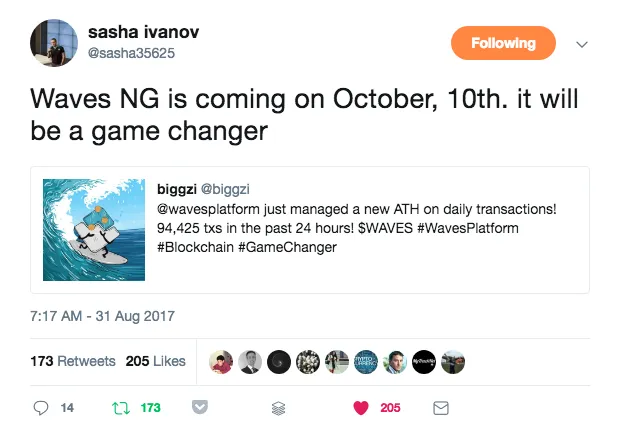
Introduction
I've been quite enthusiastic about the Waves platform and it's constant new developments and partnerships.
In the last few days the Waves team have announced that they will be implementing the "Bitcoin-NG" protocol on the platform to allow it to scale and enhance overall security.
The Announcement via Twitter:


Who is Professor Emin Gun Sirer?
The professor works at Cornell University and was part of the team that discovered and warned the community about the Slockit DAO bug before it was exploited and caused the split of ethereum into two separate chains.

I have been following the professor on twitter and reading his blog posts for quite some time.
He is always approachable and willing to take the time to explain things to less technical people like myself - no matter how ignorant or clueless we may be!
Unlike some academics he doesn't take himself too seriously either.
If you are interested in some of the technical aspects of cryptocurrency I would strongly suggest following him.
What is Bitcoin-NG?
From my (albeit limited) understanding it is an alternative bitcoin scaling solution that does not involve increasing the size of blocks or decreasing the block time interval.
This reduces the risk of forks amongst other advantages (see below).
How does it work?

I won't even pretend to fully understand the details of this but the following is taken from a blog post by the professor and his colleague Ittay Eyal:
Bitcoin-NG sidesteps the scaling dilemma by inverting the behavior of the blockchain. In Bitcoin, the system generates a retrospective block that encases in cryptographic stone the transactions that took place in the preceding 10 minutes. In Bitcoin-NG, the protocol is, instead, forward-looking: every 10 minutes, NG elects a leader, who then vets future transactions as soon as they happen. The former is necessarily limited by the blocksize and block interval, while the latter approach can run as fast as the network will allow.
You can read more on the blog post if you are technically minded.
There is also an arXiv whitepaper that goes into more detail here but is a bit to technical for someone like me to understand.
What are the advantages?
According to the aforementioned blog post these are:
Increased throughput and reduced latency - limited only by the physical network itself.
Greater "fairness" towards smaller miners (see blog post).
Reduced centralisation incentive as a result of point 2.
Reduced risk of forks and greater security.
So what does this mean for Waves?

I think the most important thing is that this will allow Waves to scale without the fears of a chain split that have plagued other platforms, most notably Bitcoin.
It is just further evidence of how forward thinking and proactive the Waves team are.
It seems almost every day they are making new deals, partnerships and announcements that make the platform more useful, viable and ultimately secure.
Anyway although I am a confident supporter of Waves, I would always caution that anyone who is interested in investing do their own personal research - don't just take my word for it.
Also please take a look at the Bitcoin-NG blog post and whitepaper for yourself.
I would be particularly interested to hear the opinions of those who understand the technical details better than me.
Thank you for reading

